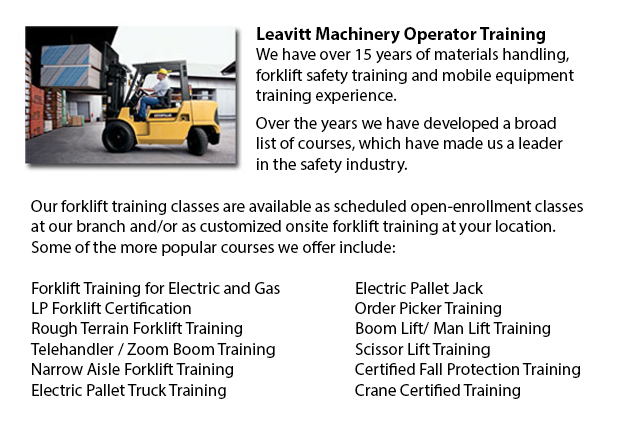
Kelowna Forklift Training School - Forklift Training School And What It Truly Has To Offer - CSA and OSHA establish criteria for forklift safety training that meets current standards and regulations. Anybody planning to operate a forklift is needed to successfully finish safety training before using any kind of forklift. The accredited Forklift Operator Training Program is designed to offer trainees with the knowledge and practical skills to become a forklift operator.
There are forklift operation safety rules that must be followed pertaining to pre-shift inspections, and rules for loading and lifting.
An inspection checklist should be done and submitted to the supervising authority before starting a shift. When a maintenance issue is uncovered, the utilization of the specific equipment should be discontinued until the problem has been addressed. To be able to indicate the equipment is out of service, the keys must be removed from the ignition and a warning tag placed in a visible place.
Loading safety regulations comprise checking the rating capacity on the forklift nameplate and determining if the load weight falls within capacity. The forklift forks must be in the down position when the forklift is starting up. Keep in mind that there is a loss of roughly 100 pounds carrying capacity for every one inch further away from the carriage which the load is carried.
In order to safely lift a palletized load, drive the forklift toward the pallet and stop with the fork three inches away from the load. Level the mast until it is at right angles to the load. Raise the forks to one inch below the slot on the pallet and drive forward. Then lift forks four inches. Tilt back the load to be able to secure it for moving. Drive the lift backwards if the load obscures frontal vision. Check behind and honk in order to warn other personnel. Never allow forks to drag on the ground.
-
Kelowna Forklift Training Program
Kelowna Forklift Training Program - The lift truck is a common powered industrial vehicle which is in wide use these days. They are sometimes called hi los, lift trucks or jitneys. A departments store would use the forklift to unload and load merchan... More -
Kelowna Crane License
Kelowna Crane License - Crane operators ought to be "credentialed", that means they ought to have a crane operator certification or license. Credentialing is considered a mandatory governmental requirement in order to practice as an operator of a cra... More -
Kelowna Boom Lift Safety Training
Kelowna Boom Lift Safey Training - Boom lifts fall under the type of elevated work platform or aerial lifting device. Most usually used in warehousing, construction and industry; the boom lift is so versatile that it could be utilized in almost whate... More -
Kelowna Loader Training
Kelowna Loader Training - Loader Training - Any individual who would like to operate a forklift should take a Loader Training course in order to become a certified forklift truck operator. There are a variety of ways to obtain forklift training. Cour... More -
Kelowna Aerial Lift Safety Training
Kelowna Aerial Lift Safety Training - Each and every year, there are roughly 26 construction deaths attributed to the use of aerial lifts. Most of the craftsmen killed are electrical workers, laborers, painters, ironworkers or carpenters. The majorit... More -
Kelowna Crane Ticket
Kelowna Crane Ticket - Modern cranes can either be simple or complex, based upon the nature of the application they can carry out. For example, mobile cranes are somewhat simple units. A telescopic boom and even a steel truss mounts its movable platf... More -
Kelowna Boom Lift Operator Training
Kelowna Boom Lift Operator Training - The cherry picker work platform is a type of work platform, that will typically have a bucket or platform at the end of a hydraulic lifting system. The machine is likewise referred to as a man lift, boom lift, hy... More -
Kelowna Heavy Equipment Ticket
Kelowna Heavy Equipment Ticket - Depending on the nature of the job at hand, the kind of construction equipment that a heavy equipment operator makes use of differs. Every kind of machine is made to perform particular tasks in the most effective mann... More

Leavitt Operator Training
TOLL FREE: 1-888-254-6157
101-864 McCurdy Place
Kelowna, British Columbia
forkliftcertificationkelowna.com
Email Us
About Us


